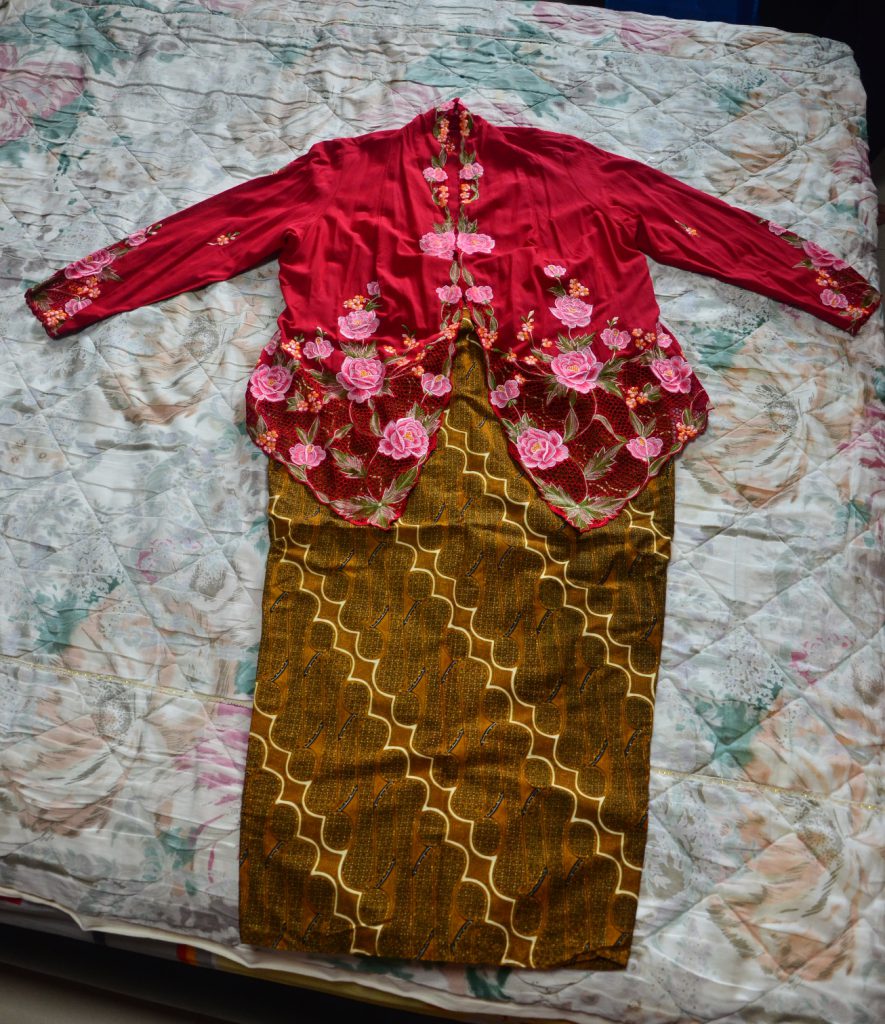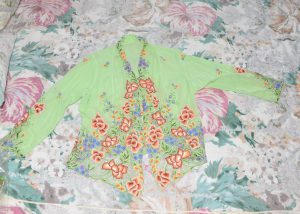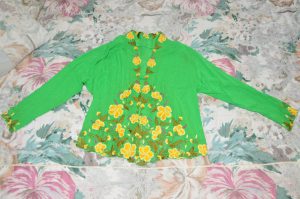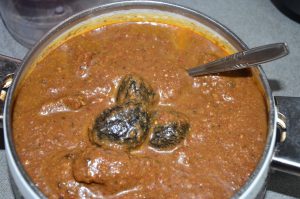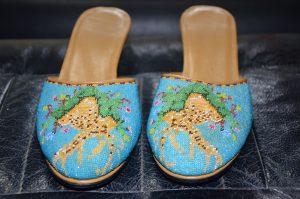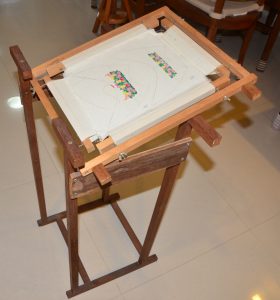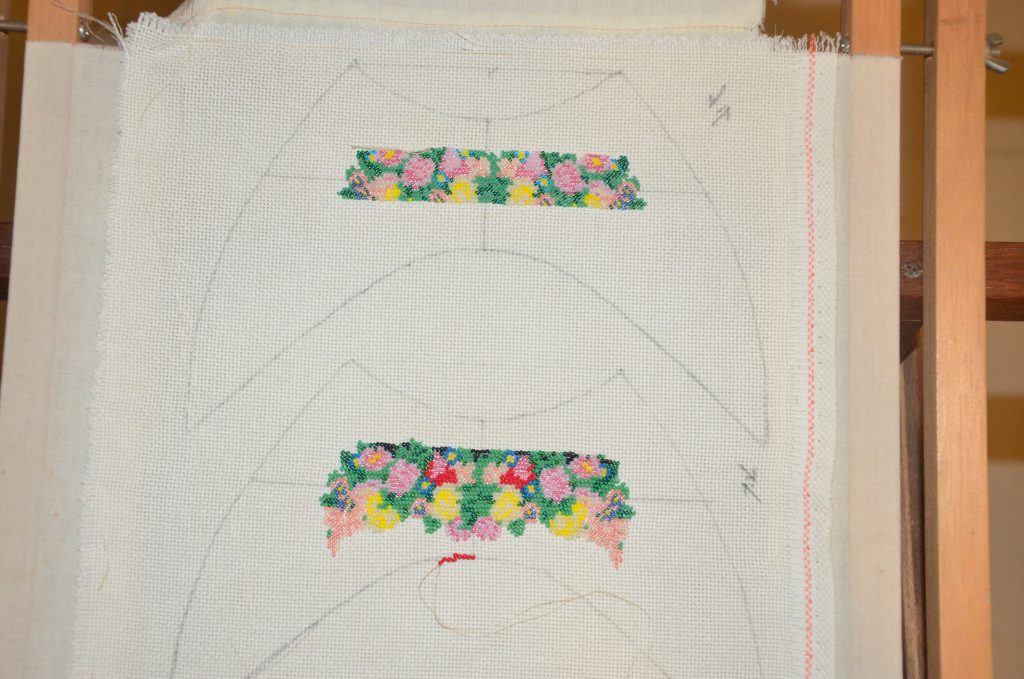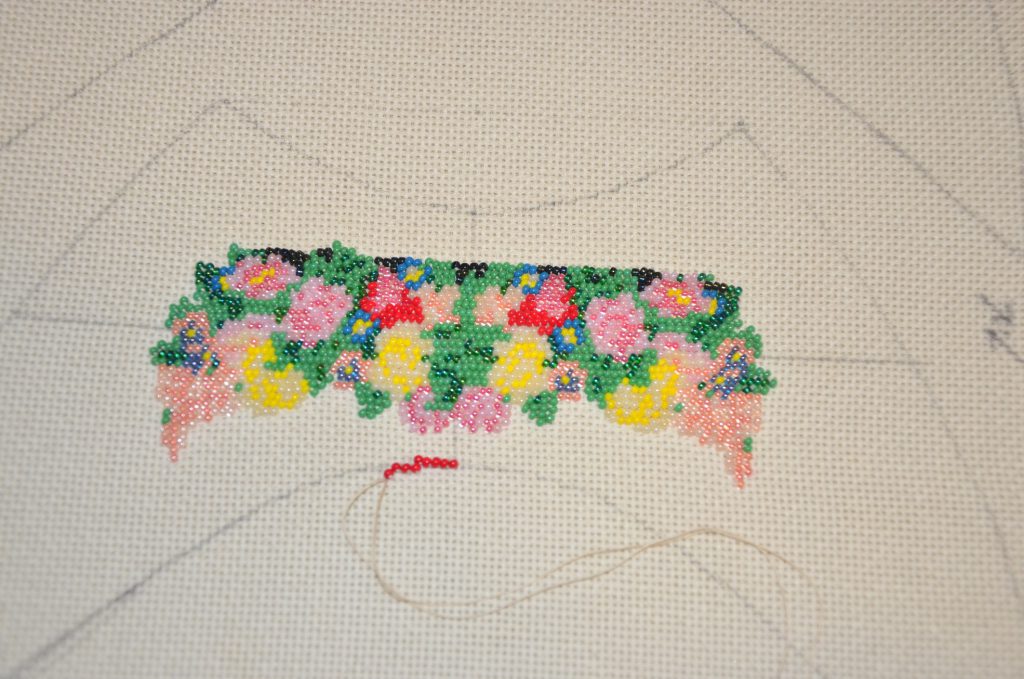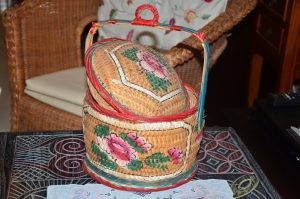Stories gathered from casual talk with grandaunt (90 years old): (In her perspective)
Interview 1 Transcript:
Both my parents are pure Peranakan from Penang. She brought her younger brother along to marry into the family because she was an orphan already. My father was educated in an English school before and his name was Tay Ang Moh. He conversed in malay and English to us.
My parents were very strict. We cannot talk nor do any unnecessary movements during dinner or meal times. If not my father would throw the bowl of rice in your face (rice bowl broke) and then you are not allowed to eat dinner anymore for the night.
My father usually sleeps at 7.30pm. He would then place his shoe nicely at his doorway and it should remain that way for the night. If he wakes up and finds the shoes misaligned, he would then call everyone out and interrogate them. If no one dares to own up, he would use the huge gemstone in his ring to knock on everyone’s head.
All windows were closed tightly with curtains throughout the house. For the women in the family, they were not allowed to go out of the house nor even peep through the window. If they get caught, they will be punished. Whenever my mother wants to watch a play/ film, my father would make special arrangements for the actors to set up a stage at home for the women to watch. They were strictly not allowed to be outside.
My father was working in a British company and he was usually dressed in tip top condition with his white suit and drove a car to work. And if the children (more for women) wanted to go to school, he would make special arrangements for a chartered trishaw with completely closed lids/ curtains for us.
Mini Cheats over the years: My brothers would bring the sisters out to dance/ party when my father was not around. They would ask the servant at home to guard the door from 7pm onwards. They would then take note of the time closely and quickly make their way home at 11pm and changed out of their outfit quickly. Some pretended to sleep while I pretended to wait for my father downstairs to have supper together. He loved to eat roasted pigeons for supper. He used to set up a mini house for the pigeons to live in at their rooftop. He would then climb and catch one for supper when he felt the craving and then proceed to roast them with spices.
He passed away as he was tortured by the Japanese. (It was the Japanese Occupation that time). He was caught to stand at the door way of our house at 6am in the morning till late at night. He was not allowed to drink any water nor eat anything. He stood there in the hot sun throughout the day. We (the children) stayed in the house and peeped through the window to check on our father every now and then, only to find him on the verge of toppling over each time. One Japanese soldier walked up to him in the night and used his gun to hit his head hard. We knew that it was a dangerous situation. We couldn’t do anything to help him. Shortly after, the Japanese soldiers left out area. We rushed out to help him into the house. Unfortunately, due to the lack of water and food for days, he got too weak to move, much lest heal quickly enough. He passed away after 3 days. He was a very strong man. That Japanese soldier killed him. (Grandaunt was very agitated at this point)
Some of my father’s habits:
We used to rent the house at Syed Alwi road. It was very cheap in the olden days, it only cost us 30 dollars. He usually walks from Syed Alwi road to Chinatown. Hierarchy of the family: I am the 5th child of the family but they usually do not count the females. No matter what, the males come before us. However, my father loves me the most amongst the females. He handed his keys to his personal belongings and valuables to me only.
My mother was known as the medicine lady ( lao sin seh ma) in the kampong and around the estate. Those living nearby often came by and consulted her regarding some illnesses and what specific herbs or concoctions they can make to self-heal. She also grew a lot of herbs in her garden and would often offer to those who came to her for help. There was once a child in the kampong got a fits attack, she rushed and took a couple of herbs along with ginger, onions and a spoon and headed over. She panicked as well and the child bit her nail into two. It was a horrific sight. Despite that, she used a spoon to pry open the child’s mouth and stuffed the smashed herbs to stuff inside. Subsequently, she also rubbed it all over his face, neck and other body parts. I remembered she too poured soy sauce into the child’s mouth. Eventually, the fits died down and the child was rescued.
Another example would be when people came to consult her regarding a cough, she would pluck a few leaves off her peppermint tree in the garden and advised the “patient” to make peppermint tea out of it or he or she could cook it with lean pork into a dish. However, there is a certain “rule” to it. It was believed that men should use odd number of peppermint leaves (3,6,9) while the females should use even number of peppermint leaves (2,4,6) to cook them with lean pork and drink the soup. If it’s cold cough, the phlegm would be whitish in colour, heaty cough, the phlegm would be greenish yellow.
There was once I fell very ill and kept coughing non-stop for 2 weeks. I consulted the doctor at the polyclinic who then claimed that my lungs were slightly ruptured and swollen and that I am in a critical condition. My son then took me to Gleneagles and I did a full body MRI scan, only to find that I am fine. I spent 6000 dollars away like this. After which, I did not want to take any more western medicine and relied on my mother’s old cough formula. Since it was more developed already, peppermint leaves would not be effective. Hence, I used the ginger formula. I bought a big piece of old ginger home and juiced it. (Grind it and squeeze the juice out manually) Heat the ginger juice over the stove to luke warm and add in 2 spoonfuls of quality honey. Stir to mix it well and quickly gulp it down. Do not drink water after that. It was a cheap remedy. I only drank it for 3 times and I am more or less recovered.
Interview 2 Transcript:
Nonya kebaya kerosangs can determine the status of your family. For the richer people, their kerosangs are more elaborate, with more flowery details in gold and some diamond encrusted (berlian) as well. For the poorer people, their kerosangs are just a plain strip of gold. They would then wear a belt for the kebaya made of silver. For the richer families, the belt buckle would be in gold.
Tok Panjang’s must have dishes: buah keluak, chap chai, babi ponteh, curry ayam, salted mustard duck, soup containing: pork balls, fish balls, cabbage, fish maw, prawns and bamboo shoots, otah and belachan chilli. Ang ku kueh, kueh bahulu and Otah originated from Peranakan.
Preparations for the buah keluak dish were extremely tedious. They are actually poisonous fruits. You have to soak them in water for about 2 weeks and change the water daily. After which, u have to hack an opening in the nut and dig out the flesh and the seed. Mix the flesh with marinated meat well and stuff it back into the nut shell. They were then cooked with pork ribs or chicken.
The head and tail (2 ends) of the tok panjang must be occupied by the hosts / the elderly in the house. Family members usually sit on a table together. For their friends, they have another separate table for them.
The hiring of servants also determine the status of your family. For the wealthier ones, they would hire a butler while the middle class families would hire a female servant.
Some pictures I took:
Unfortunately, my grandaunt was suffering a relapse from shingles and it was getting increasingly difficult for her to continue to interview. I took several photos of her belongings that are closely related to the Peranakan culture. Since she was not well, it was difficult for her to dig deep into her wardrobes for her other belongings. Hence, although I may not have a lot of artifacts or photographs, the knowledge gained from the 2 interviews are quite interesting for me to learn more about the Peranakan culture.
